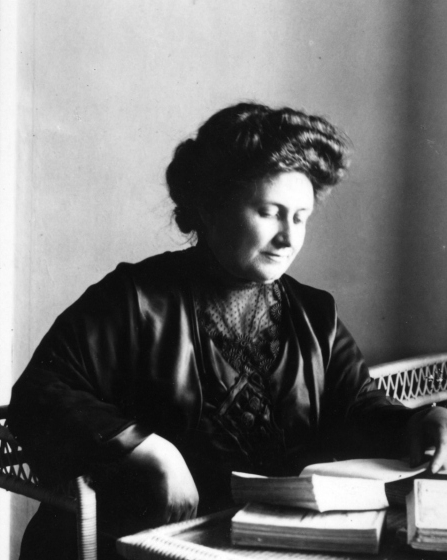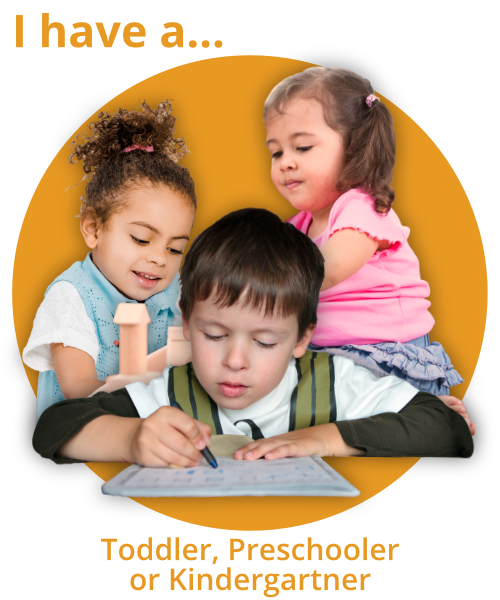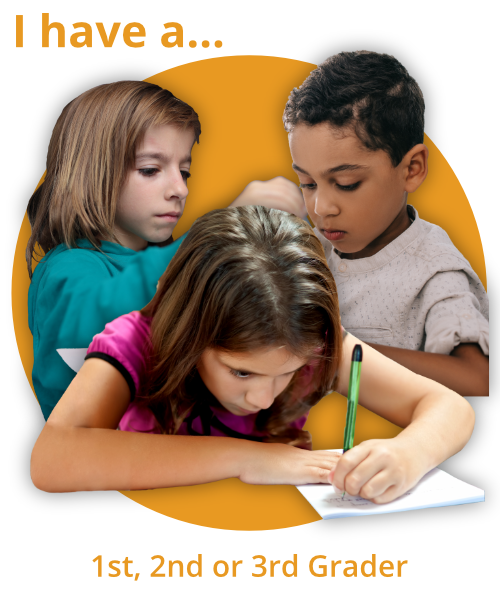1913: The Year of Maria Montessori's Fatal Mistake
When I look at this photo of Maria in 1913, I smile at her old fashioned lacily modest neckline, her coiffed hair, the folds of dark fabric which enveloped her frame. I wonder if she was overweight by early 20th century standards.
I wonder if the children ever spilled their soup all over her lap, ruining that fancy looking dress. I want to know if she erupted into fits of uncontrollable giggles inappropriately. If she was prone to sarcasm, despite the ever-present look of calm and peace you see in all of her photos. Was she...real?
Yes, Montessori is the "genius" behind the Montessori method. But for the sake of keeping it real here 100 years later, let's take a more intimate look at her life in the year 1913.
Birth and Death
In December of 1912, Maria's mother Renilde died with Maria at her bedside. Maria grieved stoically for three days without eating a single bite of food or conveying any emotion to bystanders. Afterwards, dealing with her grief in her own way, she plunged into her work.
1913 was a year after The Montessori Method was published. In fact, in the photo above, Maria is perusing the new edition of this very book, and the Montessori method as a revolutionary educational philosophy was rapidly gaining popularity around the world.
There were almost a hundred Montessori schools in America alone. Alexander Graham Bell's wife, Mabel, was the president of the new Montessori Educational Association in Washington, D.C. Maria's great task this year was to train her very first set of international students in her methodology.
The task, however, was not smooth going. Weeks after her mother's death, Maria was engaged in teaching Montessori teacher wanna-bes from Germany, Switzerland, Ireland, Australia, Africa, India, England, and the United States.
She greeted her eighty-seven students in Rome in a tiny room, giving them a little memorial mass card with her mother's photo on them. She was an imposing figure in a black mourning dress, a mourning tradition she would continue until very near the end of her life. Every sentence she spoke was carefully translated into English by an interpreter as she taught.
This was how the training began.
Does the somber photo above begin to make more sense now?
A Complex Reunion
Would it also shift your thinking if I told you that 1913 was the year her son insisted that she recognize him as her own? Mario was fifteen when he stood on the school grounds and saw a car pull up beside him. When Maria got out of the car, he went right to her and announced, "I know you are my mother." He told her that he wanted to be with her and no other. And they lived happily ever after.
But did they? Maria did not raise her son.
Because Mario was born out of wedlock, he was taken in as a baby and raised by some of Maria's family members who lived in the country. This was to avoid scandal. Maria visited occasionally, but not as his mommy.
Is the woman behind the calm smile in the above photo bursting with joy at having just reunited with her flesh and blood and the anticipation of making up for all the lost years? Or is she heartbroken, on her first tour of America, having left behind in Italy her dearest and most precious possession so soon after she vowed to keep him with her from then on? Does she feel the dark guilt of the ultimate abandonment - that of your own baby?
A Tiger By the Tail
One thing is certain. With all the international exposure and her own words being (at times) poorly translated and misconstrued, Maria was concerned about the future. Things were spinning out of her control.
When the head of a school in New York City gave a course of lectures on the Montessori techniques for teachers and one of those teachers returned to Maine to pass on the enlightenment to the public, Maria felt that she needed to step in.
The Fatal Mistake
So in 1913, Maria made what I believe was her fatal mistake for the popularity of the Montessori method.
She wrote a letter:
"In view of this widespread interest I feel that the public should be able to obtain accurate information about those teachers who have been specially trained by me. Owing to the short period of the training course it has been possible to give, and also to the fact that the method has not yet attained to its full development, I feel it would be premature to establish training schools which were not under my direct supervision, so that for the present no training course for the preparation of teachers except those held here in Rome, will be authorized by me."
Considering what Maria had been through already in the year 1913, we really can't blame her for freaking out about the propagation of her theories. At the same time, it set a precedent that the Montessori movement has never really broken free from, even 100 years later.
Reversal of Fortune
Maria was proposing a dynamic shift in the way we view our youngest members of society, and now she was basically insinuating that she was the only one smart enough or capable enough to teach it correctly. Can you imagine the public's reaction to this very elitist way of thinking about something that we all feel entitled to - the education of our very own children?
I assure you, it did not go over well. By the 1920's the number of Montessori schools was on the decline. Montessori was all but forgotten for many years.
Don't fret, dear reader. Of course, there was a revival. Otherwise, how could there be about 20,000 Montessori schools worldwide and nearly 5,000 of those located in the United States at the present time?
A Ripple Effect
Unfortunately, Maria's decision back then to curtail the American educational revolution in 1913 still affects us today. Many, many well educated professionals are under the impression that the Montessori method is for the wealthy. Public school teachers tend to regard the Montessori method as being impractical and irrelevant to their day to day lives with students.
Because of that letter, what Maria feared most has happened in a way that she could never control and could never have predicted.
The Power Is Ours
It's up to us to fix this. There are now more (and varied) Montessori training options available than ever before. I'm just going to list a handful of certification programs here, and if you're interested, check them out. AMI, AMS, NAMC, GMS, UMA, KHT. And that's not nearly all!
However awesome being a Montessori trained teacher can be (and it is!), that's not how we fix it either. It's time to spread the word, my friends. Teach techniques. Hold our own lectures and courses. Model hands-on learning by learning in a hands-on way ourselves. Only we can free ourselves from the misconceptions and myths about Maria Montessori and lift up her gift to the field of education and child psychology.
Let's celebrate the whole child by embracing the whole of progressive education, not just in Maria's name, but in our own.



